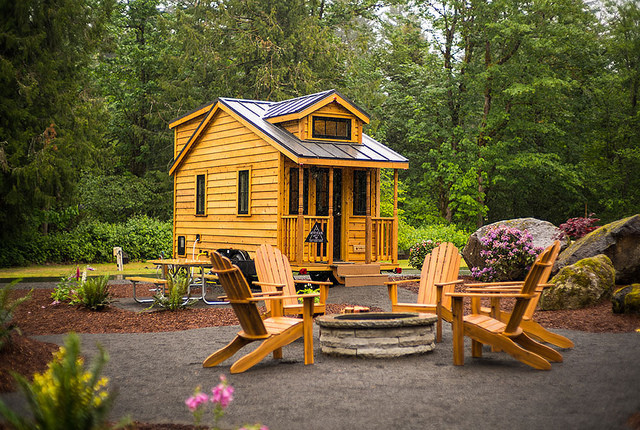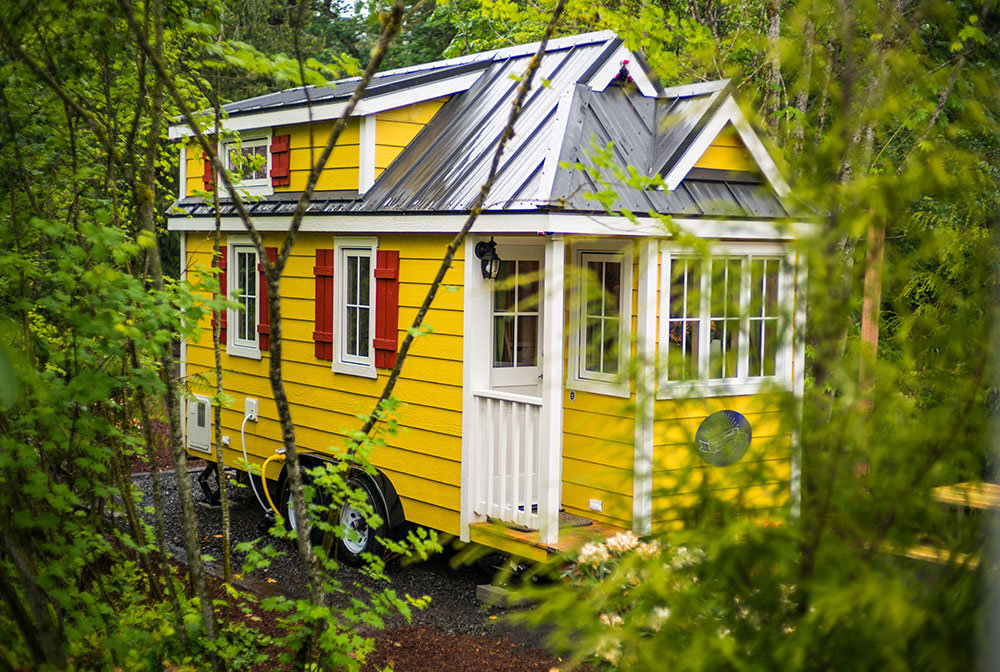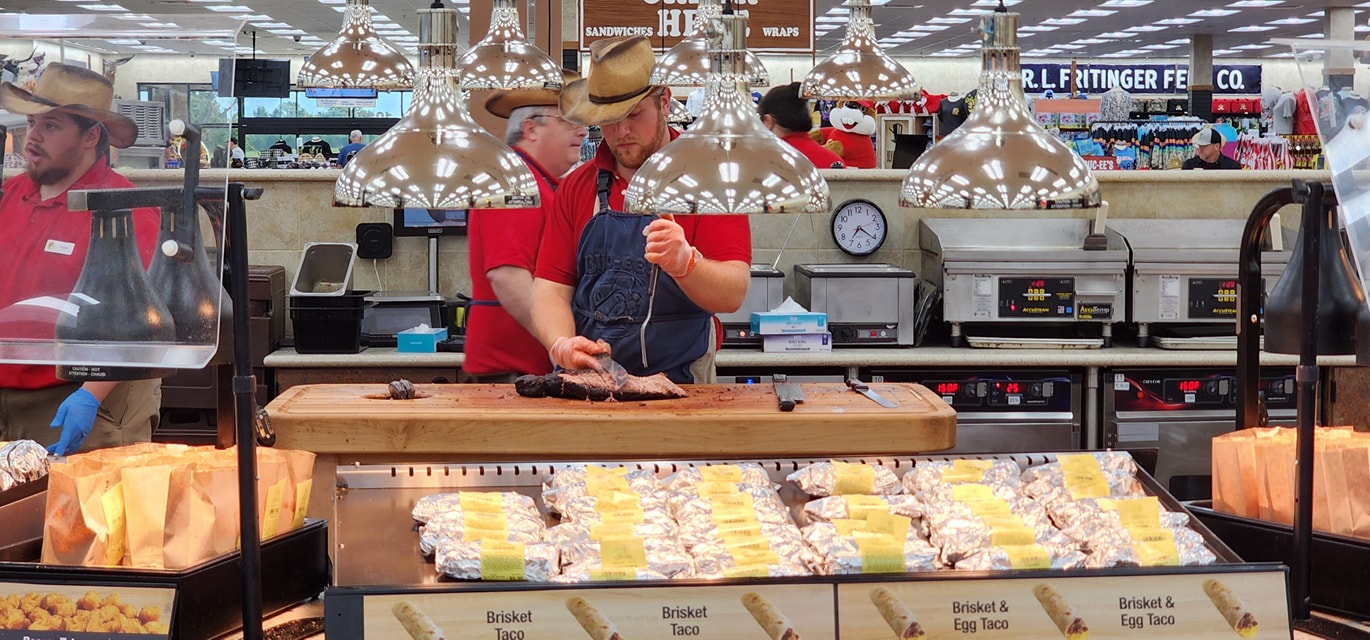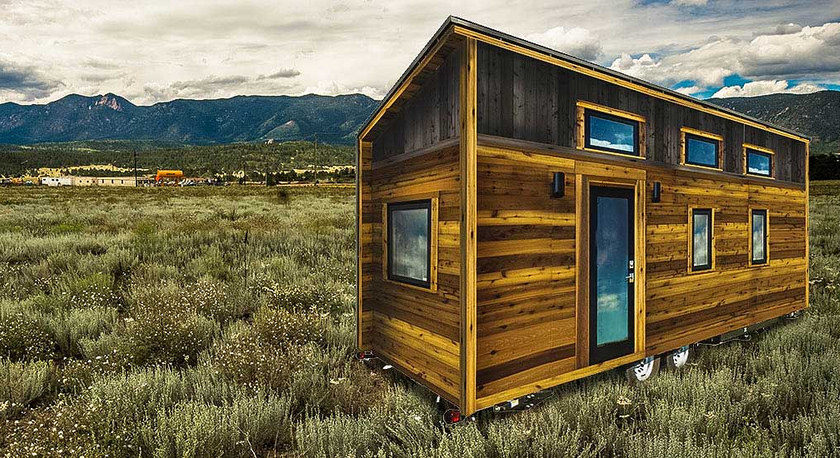Housing prices have skyrocketed in Colorado. As of April 21017, the average price of a home in the Denver Metro area was $439,161 — a 10.53 percent increase from the same time in 2016.
Many Denverites have started looking for a solution for the exorbitant prices and found a possible solution in tiny houses. Tiny houses — mobile and foundation houses less than 800 square feet — bring that number down to less than $80,000. In comparison, tiny houses are much more affordable, although cash is a buyer’s best bet due to scarce lending options.
Tiny house popularity has increased so much that just this week the movement has two big events. This includes the opening of Denver’s very first tiny home village for the homeless and Colorado’s first Tiny House Festival on July 28 through 30 at the Wild Animal Sanctuary near Keenesburg. The festival will provide information about tiny living. From mobile tiny houses, to yurts, to general DIY, you’ll be able to learn just about anything about the lifestyle at this festival.
With the festival right around the corner as well as the recent opening of the tiny house village in Denver, 303 Magazine reached out to several tiny house builders and enthusiasts to learn the pros and cons about living tiny in Colorado.
Pro: Tiny Homes Can Be Affordable
Co-owner of SimBLISSity Tiny Homes, Byron Fears, compared the ’60s blue jeans fad to the tiny homes fad today. According to him, they’re here to stay.
“The Great American Dream of the three bedroom house with a two car garage was proven to be unsustainable during the past recession,” Fears said. “The current economy is proving that the hopes of home ownership is beyond the reach of most working class people.”
There are a lot of reasons people might be looking for a more economic option. Tiny house builders cater to a range of clients with an even more vast range of monetary needs.
For example, college students come out of school with tons of debt as it is, and don’t need a mortgage payment on top of it. Many Baby Boomers lost their retirement in the recession, and need to cut back on expenses as they age and decide to stop working. Others are just looking for a more sustainable and green way to live.
To save on money, you can build a tiny house yourself.
Several companies provide the blueprints, as well as detailed instructions for you to build your own tiny house — something that would be hard to find when building a conventional house. These plans usually run for less than a grand, and can make the process cost a lot less overall.
“We try to make it feasible that anyone can [do it.] You definitely want to consult experts, to make sure there’s a comfort level and…the safest way possible to build the house is by having as much knowledge as possible,” Justin Hall of Tumbleweed Tiny House Company said.
If you don’t care about ornateness and just want a tiny house that conforms to a budget, this might be the best option for you.

Con: It’s Legally Difficult to Live in a Tiny Home
Unfortunately, the future of tiny houses is still up in the air. There is a lot of potential, but the idea is still so new, cities and permits haven’t had the time to catch up with builders and demand.
Basically, all of the builders said the same thing: Zoning and permits for tiny homes are hard to get. Although several cities like Salida, have approved zoning for them in Colorado, it’s still an uphill battle. Even Denver’s tiny home village is only approved for a six-month lease.
“Buying a tiny home can be easy, but living in a tiny legally is not happening. There are communities that are allowing it unless there are complaints. Basically, it is illegal to live in a tiny home in most of the US. Denver is not likely to get on board with the movement unless we can find a way to place automatic sprinkler systems on the interior that can extinguish an interior fire in a tiny…If [tiny homes] are “on foundation” it becomes easier to obtain a permit. The ‘on wheels’ equation creates red flags for municipalities,” Fears said.
Basically, fire code is one of the biggest obstacles tiny houses face. Because they are so small, they don’t technically need to meet other restrictions conventional houses and buildings face. Codes concerning fire safety laws, railings, exits and more need to evolve to incorporate these particular habitations.
But there is still hope.
“I don’t expect tiny houses to go away, too many people are working towards this movement and want tiny houses to be an option. It will take some time, but as we have seen there are cities that see that the tiny houses are an answer to our housing problems,” says Darla Vercruysse, owner of Tiny Houses by Darla.
Zoning for tiny houses is at the center of many city council meetings and tiny house builders are not backing down.
“As I shared with both the Boulder County and Denver Planning Departments, ‘We are here and many more are coming…it is your choice to either choke on us or deal with us cooperatively and proactively,’” Fears said.

Pro: If You Can Get Past the Legal Issues, Tiny Homes are Versatile
Tiny houses could revolutionize the mobile and eco-conscious lifestyle.
Recreational vehicle permits allow tiny houses to go where other houses can’t. Travel-trailer tiny houses are small enough to be pulled by a small truck and can run off-grid. The amount of time a tiny house can spend off-grid depends on the user.
“It really comes down to usage,” Hall said. “Every person needs to sort out what that means to them…It really causes you to be practical and consider your consumption needs and use. Can you take a five-minute shower instead of a 20-minute shower? Do you need to shower at all in your unit, or can you shower at the gym after working out? It really forces you to think about consumption and being more eco-conscious.”
Kathleen Morton has lived in a camper trailer for more than two years. The transition from an apartment to a tiny house was difficult at first, but got easier as she settled in to a new routine.
“It’s a freeing feeling to get rid of unnecessary things in your life for a more mobile lifestyle,” Morton says. “I would recommend people choose the lifestyle they are looking for first and then let the rig follow. If you want to work a full-time job in one location, a camper trailer or tiny house might work great…”
Hall described tiny houses like smartphones — they serve multiple purposes. Just like a phone can be a computer with the internet, a calculator, a calendar and every game you could imagine, a tiny house can be whatever you make it. Stairs become a bookshelf, a table becomes a bed and so on.
Con: A Mobile Lifestyle Requires More Work
Waste disposal and essentially unlimited water are two luxuries you’ll need to consider losing when making the transition to mobile tiny living.
Unless you plan to live waste free, you’ll have to consider how you’ll do away with all of your trash. Without an address, trash collection will be almost impossible to come by. You’ll have to coordinate dumping with the property owner where your tiny house is located or take your trash to the dump yourself. If you prefer the latter, dump fees are mandatory, and it’s frankly just an inconvenient way to spend a Saturday.
Aside from that, your bodily functions are about to get a lot more involved. Sure, you’ve probably seen RVs hook up to waste disposal stations while on a cross-country road trip, but for most of those people, that trip will end and they’ll be able to go back to flushing and forgetting. Once you live in a mobile tiny house full-time, this smelly — and sometimes messy — dumping of bodily waste becomes a regular necessity.
Interested in a composting toilet? This is how they work: You carry buckets of your —and visitors’ — urine and feces out to a larger bucket of urine and feces to ferment to be used as garden fertilizer. Now think about what happens if you accidentally drop one of those buckets.
Moving on.
When it comes to water, remember that most tiny houses have a limited tank. You’ll have to trailer the house to a campground to fill up or have water delivered when you run out.
Another water option is a lack thereof. Morton’s tiny lifestyle includes a camper van — with no running water.
“…For me showering and laundry were the hardest parts. I had to pack a bag every morning before work and then shower at the local gym. Also, doing laundry at a laundromat isn’t always the most exciting. Now I am used to these things, but in the beginning, I struggled a bit with changing my routine,” Morton said.
—
As more people start buying tiny houses and as builders continue to build them, the tiny house movement will progress. How fast? It’s hard to say. Tiny houses can be a great option for those who are willing to move into legal zones. But if it’s your dream to live in a tiny house in the heart of Downtown Denver, you’ll likely have to wait a while longer.






Hi Holly. I might get a position at Colorado Mountain College in Glenwood Springs. I live in Orlando now and one of my good friends is a general contractor so he floated the idea of building me a tiny house. Do you have any info about the feasibility of living in a TH in that area? Any resources you could point me to. Thanks!
Hi! I passed the info on to Holly. She will reply via email if she is able to share any contact info. Thanks for reading!
One thing I’m wondering is how tiny homes are being purchased nowadays… since they do not qualify as convential homes, do they not qualify for a mortgage loan? Must tiny home buyers pay in cash? Arrange financing with the builders? In a society with techonology and lifestyle changing rapidly, so should our laws change rapidly to keep up with the evolution of humanity! Love this article <3
Thanks for your article
However the more I look at tiny house, I have to ask what is the difference between tiny homes and a run down down tailer and in a larger view slums then 20 years of neglect? Most of the codes about house are in the hope to avoid slums and hold onto high property values.